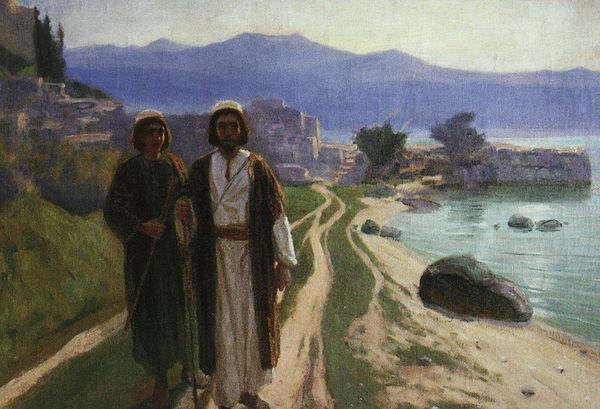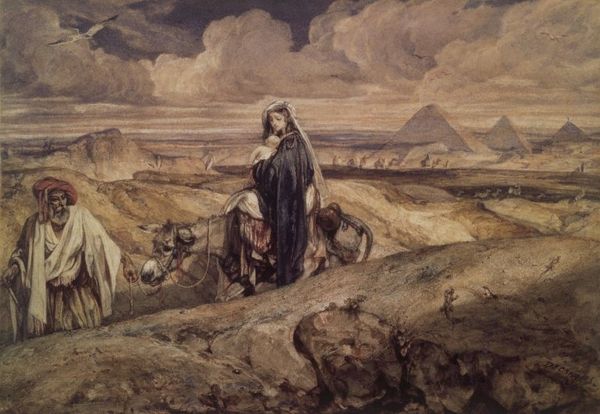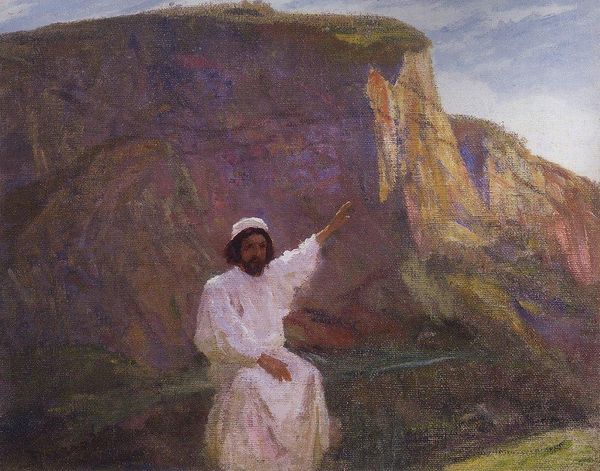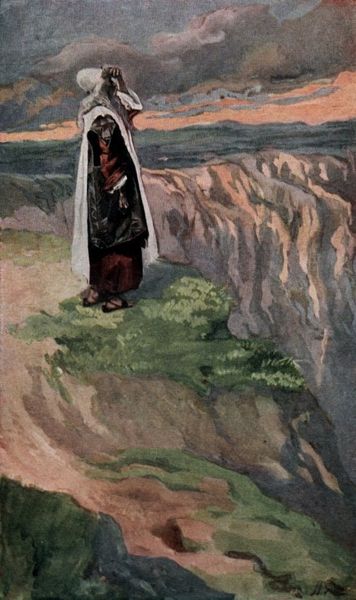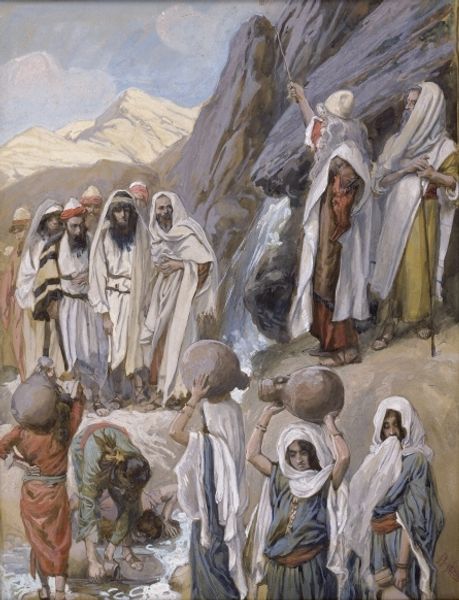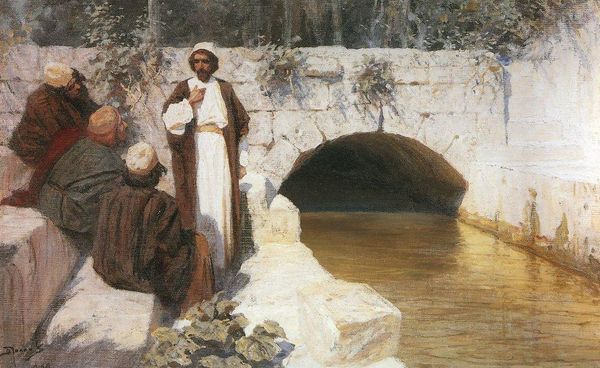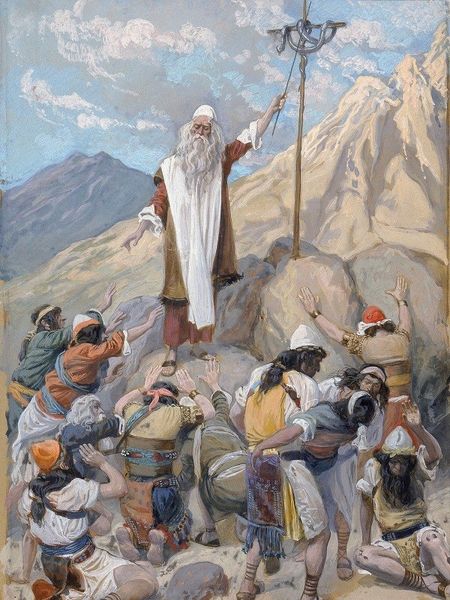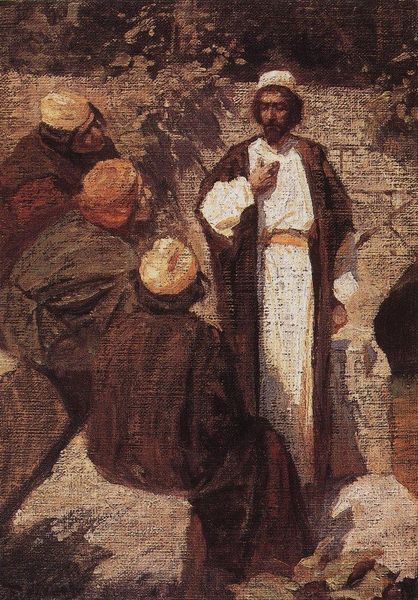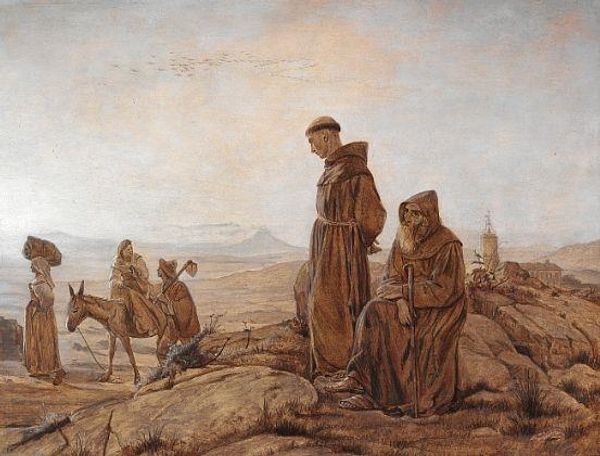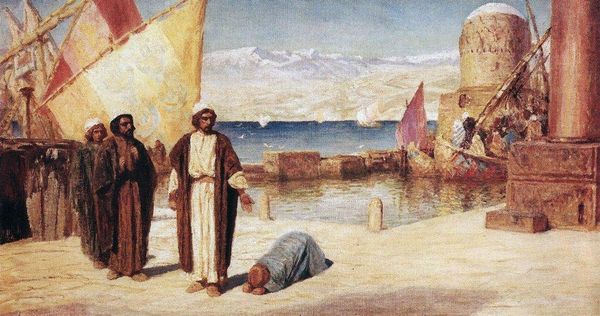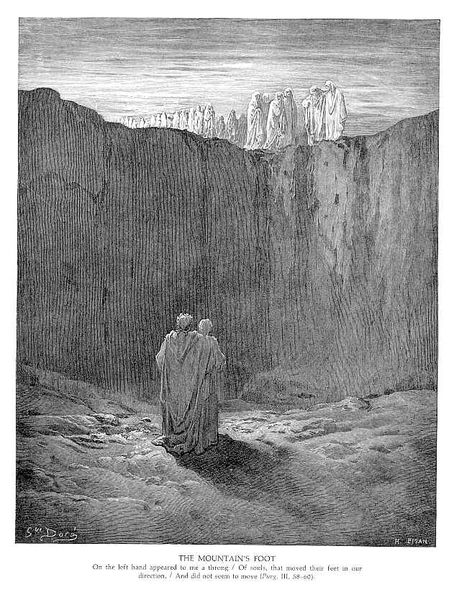
Copyright: Public domain
Curator: Immediately striking, isn’t it? There’s a powerful sense of quietude and resolve radiating from the figure. Editor: Let's dive into Vasily Polenov’s 1900 painting, "And he returned to Galilee in the power of the Spirit." It’s an oil on canvas depicting Christ overlooking a landscape, poised, and contemplative. Understanding Polenov requires a view to the rising tide of social consciousness that deeply informed the late 19th-century artistic sphere in Russia. How did identity, and, for that matter, power relations, play into Polenov's representation? Curator: The staff and the cloak; the high vantage point, too... don't they convey authority, yes, but also speak of humility and the solitude often associated with spiritual awakening? There's a deliberate staging of iconography that subtly asserts a moral framework, quite apart from dogma, as the scene unfolds. It’s interesting how visual symbols reinforce each other. Editor: Exactly. It’s critical to unpack that "power of the Spirit" bit embedded within the very title itself. Where does it derive from and for whom? To interpret this, we have to consider what the artist’s own socio-political vision enables us to glean. What statement about institutional and societal power dynamics—both in 1900 and perhaps prophetically for today—can we ascertain here? Curator: Considering the historical and religious context, Polenov seemed determined to depict Christ not just as a divine figure, but as a human one—firmly set against the background and scenery in which he carries the weight of the world, and yet is still a human being within a specific setting. The choice to root him geographically in Galilee grounds a theological narrative, but it also renders him accessible to a larger segment of the world beyond conventional religion. Editor: Agreed. And notice also the landscape; while ostensibly serene, there are harsh realities represented, like its implied austerity and roughness. These physical attributes point back toward broader power structures related to access, agency, and privilege. What resources are available, and to whom? Curator: So, to wrap up then: we observe an interplay of conventional symbols in an earthy landscape—the quietness of it. In what way is this silence itself a symbol pregnant with implication? Editor: I will consider Polenov's representation as an assertion of something deeply significant about the personhood of Christ—and also to broader structures regarding those same principles in our era and throughout the world's narratives. It certainly leaves us thinking…
Comments
No comments
Be the first to comment and join the conversation on the ultimate creative platform.

